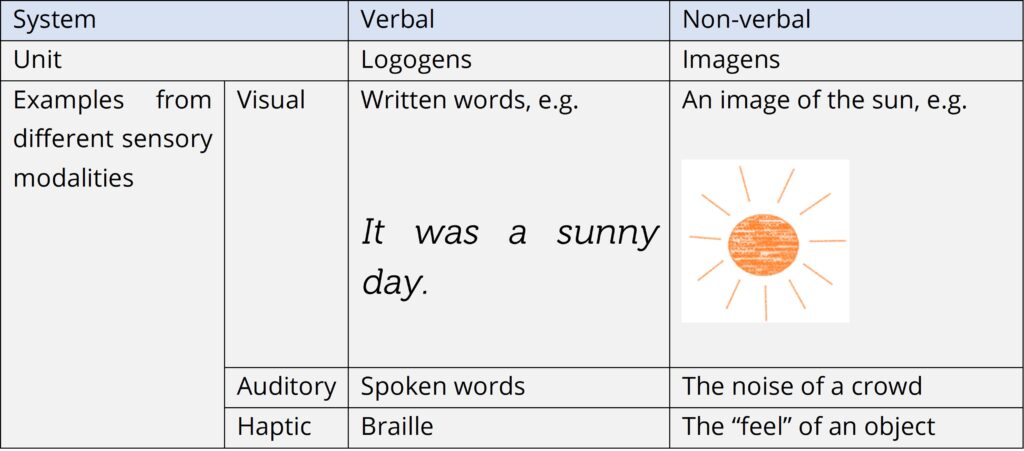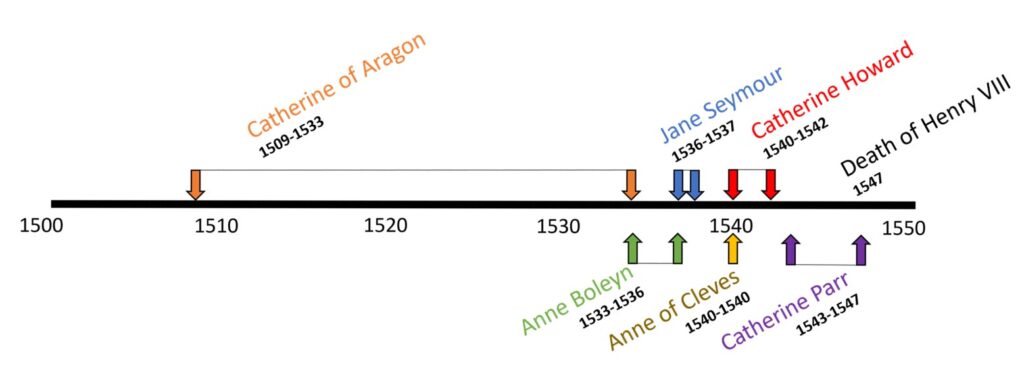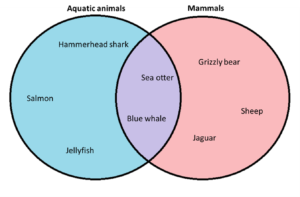18 Feb Dual Coding: How to Maximise Learning with Non-Verbal Information
This article discusses the theory of dual coding, which you can use to make teaching more effective. Cognitive load theory is referenced at some points, so if you are unfamiliar with the term or need a reminder, click here to read our article on optimising cognitive load theory first.
Verbal and Non-Verbal Information
Dual coding theory claims that we process verbal and non-verbal information separately, using two different cognitive systems. The verbal system is made up of units called logogens, while the non-verbal system is made up of imagens. Dual coding is the conveying of information using verbal and non-verbal means together.

Table 1: The characteristics of the verbal and non-verbal cognitive systems
Dual coding is not a matter of using two different senses. Conveying information via written words and pictures is dual coding, because one is verbal and the other is non-verbal, even though both use vision. But using spoken words and written words together is not dual coding because they are both types of verbal information, even though they use different senses: vision and hearing. So, dual coding has nothing to do with the (discredited) idea of ‘learning styles’. Also, note that the sound of a noisy crowd is an example of non-verbal information (Table 1) because, although people in the crowd may be speaking, the unintelligible noise of many people speaking at once is not language with a particular meaning.
Dual coding is most commonly used in learning by displaying textual information alongside images, which is an easy and effective way of using this method. For example, Figure 1 shows an image of a volcano, with text used to identify and describe its component parts. By dual coding the information, the diagram makes it easier to understand the structure of the volcano.

Figure 1: A diagram of a volcano (image from vampy1 on Pexels).
Dual Coding with Graphic Organisers
The concept of dual coding can apply to different types of non-verbal imagery. Figure 2 is an example of information written in prose, without dual coding. How easy is it to work out the chronological order of Henry VIII’s marriages from this text?
Figure 3 (below) presents this information in the form of a graphic organiser. A graphic organiser is a diagram that visualises relationships between facts, concepts. Here, the names of Henry VIII’s wives and the lengths of his marriages are displayed on a timeline. This familiar form of graphic organiser uses space to quickly convey dates and lengths of time. In doing so, it makes it much easier to work out the chronological order and duration of Henry VIII’s marriages. The important information from Figure 2 has been dual coded, with the timescales displayed non-verbally to make them easier to understand.

Figure 2: Information about the wives of Henry VIII, written in prose.

Figure 3: Information about the wives of Henry VIII, visualised using a graphic organiser.
Venn diagrams are another well-known form of graphic organiser. Figure 4 shows the names of the animals verbally and the characteristics of these species non-verbally by grouping them into different parts of the diagram.

Figure 4: A Venn diagram classifying animal species based on whether they are aquatic, mammals, or both.
Why is Dual Coding Important?
In a previous blog post, we discussed cognitive load theory and the idea that a student’s working memory is limited, while their long-term memory is practically unlimited. If the cognitive load is too high, students will not be able to hold it all in their working memory. As a result, they will struggle to learn new information by transferring it to their long-term memory. So, to help students learn we need to try to minimise cognitive load. We can use dual coding to do this, because of the fact that verbal information is processed in a different way to non-verbal information. By presenting new information both verbally and non-verbally, we can “access more working memory capacity”: the verbal memory capacity and the non-verbal memory capacity. So, you can use dual coding to ensure that students learn new information more effectively.

Table 2: Caviglioli’s (2019) “design guide” for dual-coding.
Oliver Caviglioli, who will be familiar to many teachers, argues that four principles are essential to the successful design of dual-coded resources (Table 2). All of these principles relate to making information easier to understand and learn. At Endoxa Learning, our learning resources follow the ideas of dual coding and are carefully designed to maximise learning. Click here to learn how our lessons work.
See our longer article for further explanation and a selection of academic references.


